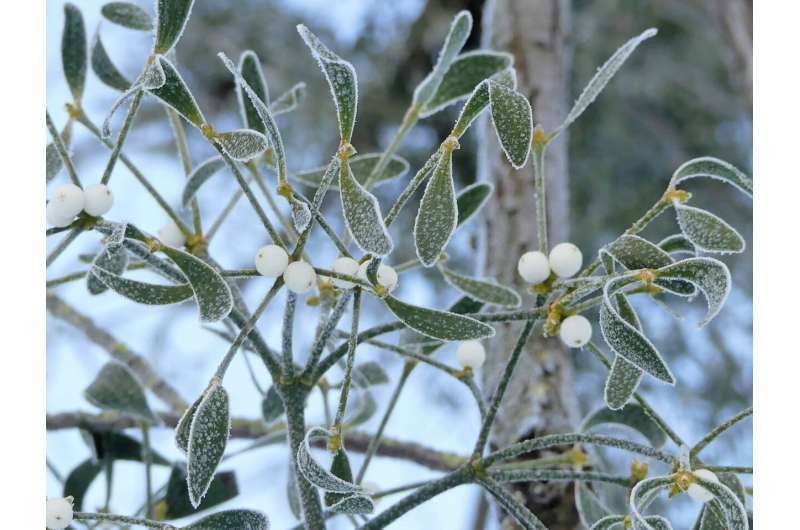Researchers gain insights into the genome of European mistletoe

Researchers around the world are working on decoding the genomes of plants. Detailed knowledge on biochemical processes in plants can provide important contributions to agriculture, environmental protection and medicine. A team of researchers from Leibniz University Hannover (LUH) has now succeeded in gaining insights into the genome of European mistletoe, Viscum album. Mistletoe is a semi-parasitic evergreen flowering plant that grows on branches of various trees and is characterized by a very special life cycle. Moreover, mistletoe is known for its special secondary compounds, which are used in the treatment of numerous diseases. However, the genome of mistletoe could not be analyzed so far due to its exceptional size. With around 90 billion nucleotides—the basic building blocks of the genome—the mistletoe genome is approximately 30 times larger than the human genome.
In order to analyze the mistletoe genome, scientists around Lucie Schröder, Dr. Hans-Peter Braun and Dr. Helge Küster from the Institute of Plant Genetics at LUH used a trick: The genome, which consists of DNA, was not analyzed directly. Instead, transcripts of the genome (RNAs), which code for the mistletoe's proteins, were isolated and transcribed into DNA using enzymes. The resulting shorter DNA molecules could then be subjected to systematic sequence analysis.
This way, the researchers were able to determine more than 39,000 mistletoe gene sequences and predict corresponding protein sequences. For the first time, they succeeded in making a systematic inventory of which proteins and thus enzymes occur in mistletoe and which metabolic pathways this plant can perform. Among them are numerous known enzymes that are generally important for life processes in plants, but also special mistletoe proteins, such as viscotoxins and viscolectins, which are considered to possess significant medicinal potential. Furthermore, the researchers were able to demonstrate that the DNA of the protein-coding sections of the mistletoe genome is characterized by a particularly high stability compared to the DNA of other flowering plants. This could contribute to the stress resistance properties of mistletoe.
"We can learn a lot from studying parasites and semi-parasites since they do not have to carry out all life processes themselves," explains Dr. Hans-Peter Braun. "If certain structures are missing, it becomes clearer what they are good for and how exactly they function." Mistletoe, for example, has a special respiratory mechanism. Studying this mechanism could also contribute to a better understanding of malfunctions of the respiratory chain in humans and animals during diseases.
The results of the research project were recently published in the British scientific journal The Plant Journal. The project can initially be seen as the beginning of a systematic molecular characterisation of mistletoe, since so far only a small part of the DNA sequences determined could be evaluated. In order to encourage further analyses, a public database has been set up in which more than 39,000 gene sequences can be accessed. The researchers anticipate that the use of this database will greatly promote future research activities relating to this extraordinary plant. The database is available at viscumalbum.pflanzenproteomik.de/
More information: Lucie Schröder et al, The gene space of European mistletoe ( Viscum album ), The Plant Journal (2021). DOI: 10.1111/tpj.15558
Journal information: The Plant Journal
Provided by Leibniz Universität Hannover



















